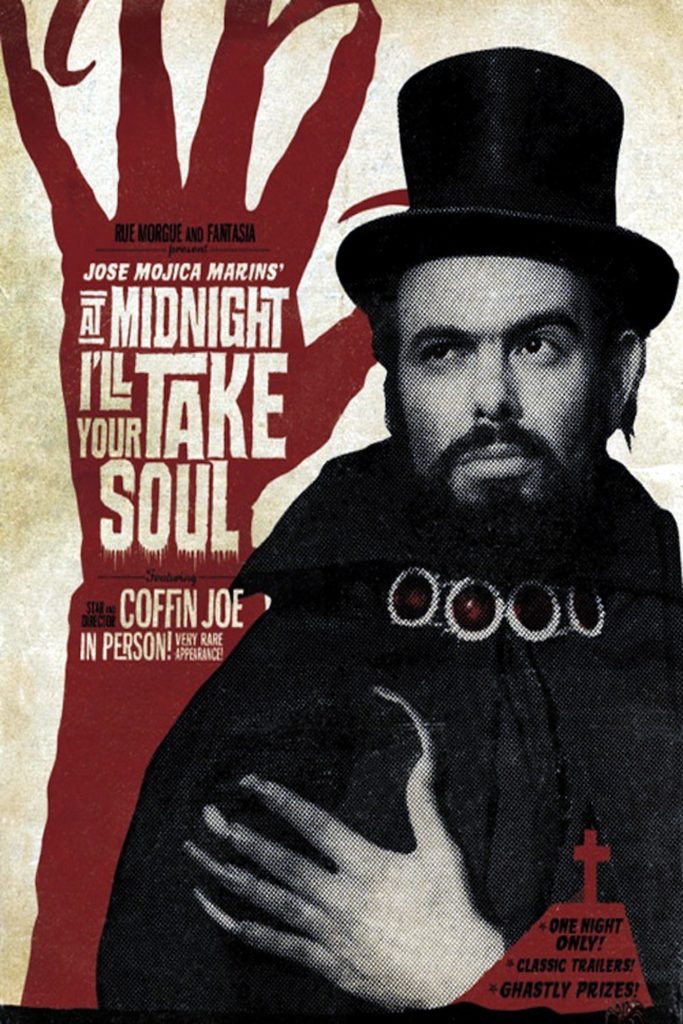It Won’t Take Your Soul, But It Might Take Your Courage

Courtesy of Dead End Follies.
By Gabriel Romito
When most Americans think of horror movies, they think of the classic slasher films, such as Halloween or Friday the 13th, or the more modern paranormal productions. Like The Conjuring. It would truly be rare to find people on the streets of Washington, D.C. who, when asked what their favorite horror movie might be, would respond with any foreign film, let alone one from 1960s Brazil. And yet one of the more frightening productions meets that exact criteria: “At Midnight I’ll Take Your Soul”, written and directed by José Mojica Marins in 1964, is a blend of melancholy eeriness that can send shivers down the spines of even the toughest athletes. The film, which is in Portuguese with English subtitles, opens with a philosophical monologue by the protagonist, Zé do Caixão. This monologue, however, is not integral to the plot, and immediately follows the opening credits, the audience is greeted by an old witch, who warns them to flee the theater before it’s too late. This break of the fourth wall foreshadows the plot of the film, as the same witch appears and interacts with the protagonist throughout the film.
The plot mainly revolves around Zé—the undertaker of a small Brazilian town—and his morbid desire for a son. Zé, lacking a moral code, will go to murderous lengths to obtain an heir. Within the first fifteen minutes of the film, the audience gets a glimpse of Zé’s immorality when he deliberately breaks the fast on Good Friday by eating lamb even while the local church’s Paschal procession goes by his house. Despite the pleas of his wife, he romantically pursues his best friend Antonio’s girlfriend. He unabashedly tells Antonio that he is a fool for believing in God, and proceeds to declare his greatness because he believes that no higher being exists to curb him. No fellow civilian dares to challenge Zé, and any unlucky soul who encounters him usually ends up involved in a scene of violence.
In one scene, while he making violent sexual advances towards the local bar’s waitress, Zé is confronted by the waitress’ uncle, who, after a heated discussion, swings his fist at Zé. In retaliation, Zé rips the crown of thorns off a statue of Jesus and jabs the crown into the uncle’s cheek, once again highlighting the protagonist’s lack of morality. The man then submits to Zé, as the rest of the bar looks on in horror.
The film develops and exposes the audience to horrific and often gory visuals. The repeated image of Zé’s raised eyebrow precedes all of his violent reactions and acts as a warning for any viewers who are afraid of blood. Rest assured, however, that Zé receives punishment for his malice: Without revealing the ending, future audiences should know that after encountering the witch from the beginning during the night of El Día de los Muertos, he is driven into an outburst of insanity, ultimately fleeing into the dark crypts of the town’s dead, where he makes gruesome discoveries.
“At Midnight I’ll Take Your Soul” deserves recognition as a classic horror film. Any viewer can watch it without knowledge of Portuguese, since there are English subtitles. I would recommend “At Midnight I’ll Take Your Soul” to anyone who is an avid consumer of horror movies, both modern and classic. In fact, it is readily available on YouTube for free, allowing anyone in the United States to watch the movie. Viewers can connect their computers to their TVs via HDMI cords and watch the chilling black-and-white picture in the dark, with only the glow of the TV itself providing light. While watching “At Midnight I’ll Take Your Soul,” you might not lose your soul, but you might lose your courage if you’re unable to handle the morbidly grotesque tendencies of Zé do Caixão!







